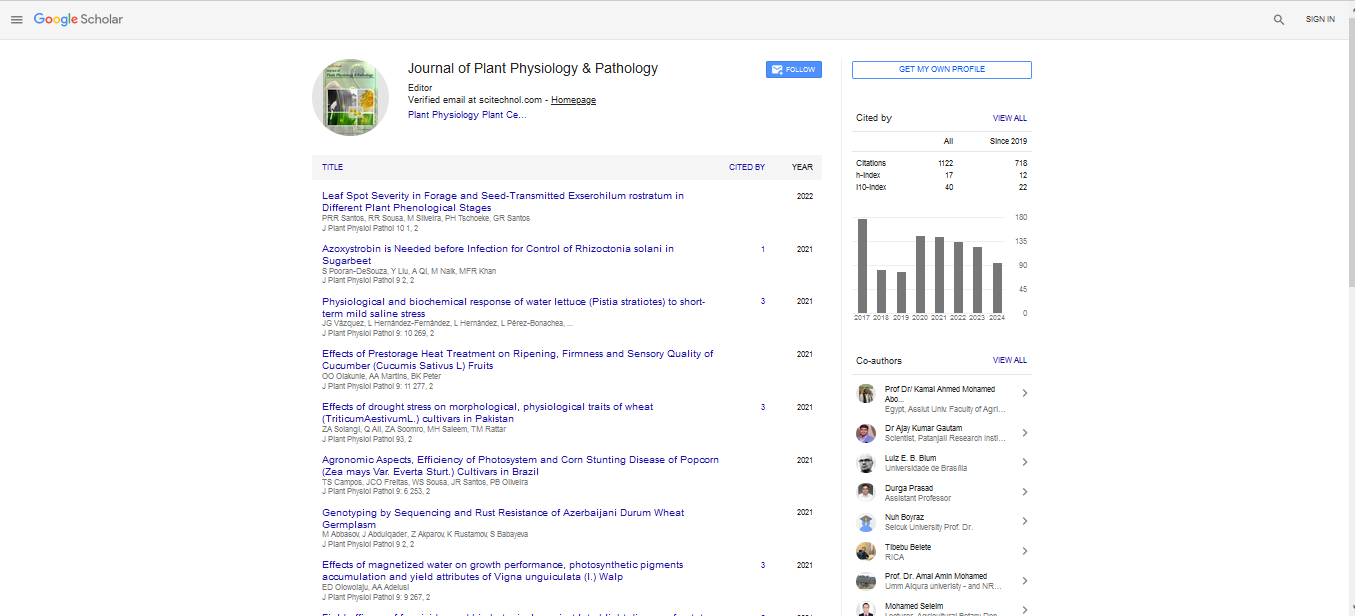Research Article, J Plant Physiol Pathol Vol: 8 Issue: 3
The Effects of Growth Regulators and Illumination Intensity on Anthocyanins Production in Psammosilene tunicoides Callus
Hong-Bian Wei, Yan-Yan Gao, Ming-Sheng Zhang*, Xiao- Hong Wang, Xue Li, Li Tian, Si-Jia Liu and Jian-Dong Liu
School of Life Sciences, Key Laboratory of Plant Resources Conservation and Germplasm Innovation in Mountainous Region (Ministry of Education), Guizhou University, Guiyang, 550025 Guizhou, People’s Republic of China
*Corresponding Author : Ming-Sheng Zhang
School of Life Sciences, Key Laboratory of Plant Resources Conservation and Germplasm Innovation in Mountainous Region (Ministry of Education), Guizhou University, 14, Xia-hui Rd., Guiyang City, China
Fax: 86-851-83856374
E-mail: mshzhang@163.com
Received: February 12, 2019 Accepted: March 28, 2019 Published: April 05, 2019
Citation: Wei H, Gao Y, Zhang M, Wang X, Li X, et al. (2019) The Effects of Growth Regulators and Illumination Intensity on Anthocyanins Production in Psammosilene tunicoides Callus. J Plant Physiol Pathol 7:2. doi: 10.4172/2329-955X.1000199
Abstract
Psammosilene tunicoides. In this study, the stems, leaves and buds of P. tunicoides were used as explants, adding growth regulators (NAA, 2,4-D and 6-BA) in MS basic medium, and by adjusting the concentrations of growth regulators and the illumination intensity in culture room to induce callus, then the proliferated callus were used to extract anthocyanins. The results showed that the callus induction rate was the highest using buds as explants; it was about 1 to 2 times high of others (stems and leaves). NAA or 6-BA contributed to induce anthocyanins synthesis in the white callus. With the increase of 6-BA concentration, the anthocyanins content increased after slightly decreased, and the anthocyanins synthesis was promoted by increasing NAA concentration from 0.5 mg·L-1 to 1.5 mg·L-1 but decreased thereafter up to 2.5 mg·L-1. The combination screening of growth regulators indicated that the combination of 1.5 mg·L-1 NAA+0.5 mg·L-1 6-BA was the appropriate condition in the range of 0.5 mg·L-1 to 2.5 mg·L-1. The illumination intensity of 2000 lx was fit for anthocyanins formation in callus. The anthocyanins synthesis in callus was repressed when 2,4-D was added into medium. The results will provide reference for the pigments production in callus culture of P. tunicoides.
 Spanish
Spanish  Chinese
Chinese  Russian
Russian  German
German  French
French  Japanese
Japanese  Portuguese
Portuguese  Hindi
Hindi 
